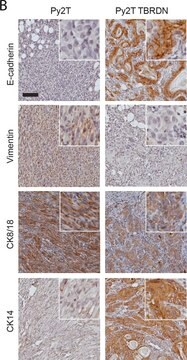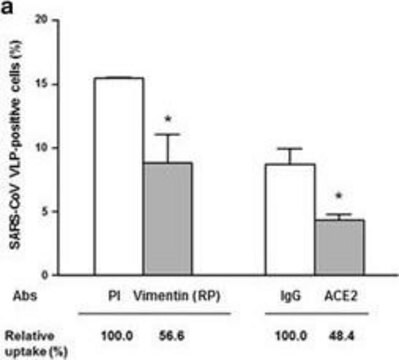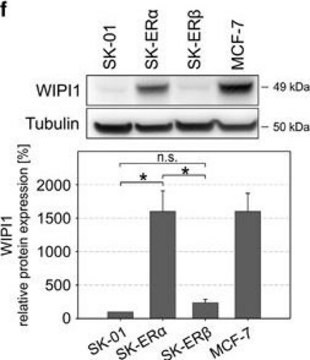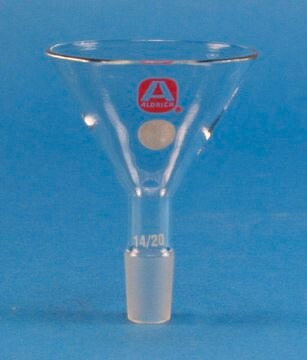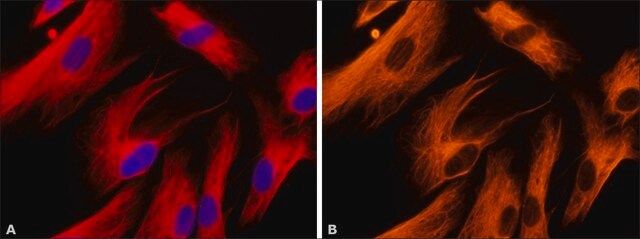W4769
モノクローナル抗WIPI-1抗体 マウス宿主抗体
~1.5 mg/mL, clone WIPI1-4, purified immunoglobulin, buffered aqueous solution
別名:
抗ATG18抗体, 抗WIPI-1α抗体, 抗WIPI49抗体
ログイン組織・契約価格を表示する
すべての画像(2)
About This Item
UNSPSCコード:
12352203
結合体:
unconjugated
application:
WB
クローン:
WIPI1-4, monoclonal
化学種の反応性:
human, mouse, bovine, rat
citations:
2
テクニック:
western blot: 2-4 μg/mL using whole extract of G361 cells
おすすめの製品
由来生物
mouse
結合体
unconjugated
抗体製品の状態
purified immunoglobulin
抗体製品タイプ
primary antibodies
クローン
WIPI1-4, monoclonal
フォーム
buffered aqueous solution
分子量
antigen ~49 kDa
化学種の反応性
human, mouse, bovine, rat
濃度
~1.5 mg/mL
テクニック
western blot: 2-4 μg/mL using whole extract of G361 cells
UniProtアクセッション番号
輸送温度
dry ice
保管温度
−20°C
ターゲットの翻訳後修飾
unmodified
遺伝子情報
human ... WIPI1(55062)
mouse ... Wipi1(52639)
rat ... Wipi1(303630)
詳細
Monoclonal Anti-WIPI-1 (mouse IgG1 isotype) is derived from the hybridoma WIPI1-4 produced by the fusion of mouse myeloma cells and splenocytes from BALB/c mice immunized with a synthetic peptide corresponding to a fragment of human WIPI-1, conjugated to KLH. WIPI-1 (WD repeat domain phosphoinositide-interacting protein 1) the mammalian orthologue of Atg18 in S. cerevisiae and A. thaliana, is a member of the WIPI subfamily of WD-repeat (Trp-Asp) proteins. WIPI-1 has a 7-bladed propeller structure and contains a conserved motif for interaction with phospholipids. WIPI-1 is expressed in normal human tissues with high levels in skeletal muscle, heart and testis.
アプリケーション
Monoclonal Anti-WIPI-1 antibody has been used in immunoblotting, immunoprecipitation.
生物化学的/生理学的作用
WIPI-1 (WD repeat domain phosphoinositide-interacting protein 1) plays an important role in signal transduction, transcription regulation and apoptosis. Endogenous WIPI-1 partially colocalizes with the autophagosomal marker LC3 and induction of autophagy leads to the accumulation of WIPI-1 in large vesicular and cup-shaped structures that are characteristic for autophagy-linked proteins. WIPI-1 is aberrantly expressed in human cancer and is linked to starvation induced autophagy.
物理的形状
0.01 M PBS溶液(pH 7.4, 15 mMアジ化ナトリウム含有)。
免責事項
Unless otherwise stated in our catalog or other company documentation accompanying the product(s), our products are intended for research use only and are not to be used for any other purpose, which includes but is not limited to, unauthorized commercial uses, in vitro diagnostic uses, ex vivo or in vivo therapeutic uses or any type of consumption or application to humans or animals.
適切な製品が見つかりませんか。
製品選択ツール.をお試しください
最新バージョンのいずれかを選択してください:
Noboru Mizushima et al.
Cell structure and function, 27(6), 421-429 (2003-02-11)
Macroautophagy is an intracellular degradation system for the majority of proteins and some organelles. The molecular mechanism of autophagy has been extensively studied using the yeast, Saccharomyces cerevisiae, during these past 10 years. These studies suggested that the molecular machinery
Human WIPI-1 puncta-formation: a novel assay to assess mammalian autophagy
Proikas-Cezanne T, et al.
Febs Letters, 581(18), 3396-3404 (2007)
Tassula Proikas-Cezanne et al.
FEBS letters, 581(18), 3396-3404 (2007-07-10)
Autophagy depends on the activity of phosphoinositide-3 kinase class III to generate PI(3)P. We identified the human WIPI protein family of PI(3)P-binding factors and showed that WIPI-1 (Atg18) is linked to autophagy in human cells. Induction of autophagy by rapamycin
WIPI-1alpha(WIPI49), a member of the novel 7-bladed WIPI protein family, is aberrantly expressed in human cancer and is linked to starvation-induced autophagy
Proikas-Cezanne T, et al.
Oncogene, 23(58), 9314-9314 (2004)
Tassula Proikas-Cezanne et al.
Oncogene, 23(58), 9314-9325 (2004-12-17)
WD-repeat proteins are regulatory beta-propeller platforms that enable the assembly of multiprotein complexes. Here, we report the functional and bioinformatic analysis of human WD-repeat protein Interacting with PhosphoInosides (WIPI)-1alpha (WIPI49/Atg18), a member of a novel WD-repeat protein family with autophagic
ライフサイエンス、有機合成、材料科学、クロマトグラフィー、分析など、あらゆる分野の研究に経験のあるメンバーがおります。.
製品に関するお問い合わせはこちら(テクニカルサービス)